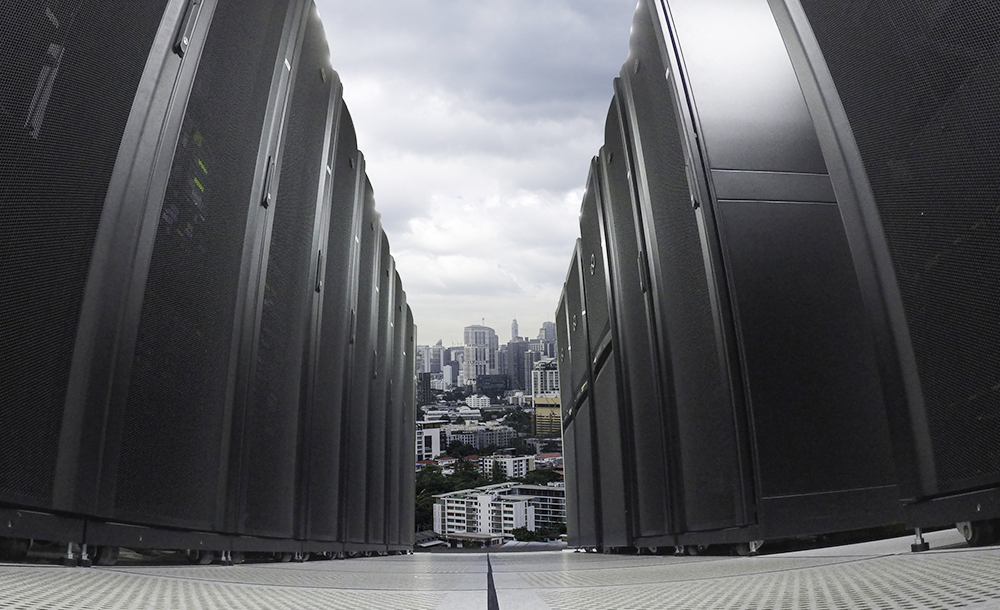Data center construction continues to be one of the fastest growing segments of the commercial construction market
As more companies utilize increasing amounts of data requiring additional computing power, the rate of data center construction continues to rise in order to keep up with the evolving business landscape. The sustained and increased use of data for business analytics as well as marketplace trends – such as the development and anticipated use of autonomous vehicles and the continued evolution towards cloud computing – mean more companies than ever are exploring data center construction
Some of the complexity of data center construction is due to the wide-ranging needs of data center owners across industries.
Yet, regardless of industry, two factors are critical to day-to-day data center operations according to one data center construction expert.

“Without a doubt, power and data are the lifeline of a data center,” said Ben Schneider, project director and industrial market segment leader at Granger Construction in Lansing, Mich.
Perhaps unsurprisingly, these are also the two biggest cost consideration factors for companies going through the data center site selection process.
Site selection is a critical component of any construction project but looms even larger in data center construction because of the heightened role location plays on influencing annual data center operating costs as well as the anticipated lifespan of the facility.
“There are a number of factors that go into the site evaluation process,” Schneider said. “But, all things being equal, nothing impacts the bottom line as much as the cost of power and the cost of fiber network connectivity.”
To be certain, factors like environmental concerns, the risk of a natural disaster and extreme weather, and proximity to transportation and labor should also be included as part of the site evaluation process. Because of the unique nature of data center operations, however, companies are wise to focus most of their attention on the two factors of site selection that have the biggest impact on the financial bottom line: the availability and cost of both power and data sourcing.
Power
The cost of power can vary greatly by location and is among the largest ongoing costs of operating a data center facility.
Power needs are directly tied to the amount of computing capacity a company requires. The type and amount of data being stored will determine the server rack densities and, as such, how much power is required to operate the facility.
In general, the closer a data center location is to existing high-voltage lines, the better. Having an existing power supply nearby can significantly reduce upfront costs, since the need to construct new power infrastructure is minimized.
Power infrastructure pricing will vary depending on supplier.
“High-voltage power suppliers often price their infrastructure quite differently,” said Schneider. “The location chosen will determine what suppliers are available to provide necessary power to the facility and what their costs will be.”
Some locations under consideration may benefit from having multiple power supplier options. In such instances, companies may be able to evaluate based on price or negotiate a lower rate.
When evaluating potential locations, companies should also scrutinize both the upfront and annual usage costs closely.
Data
Data/fiber networks should also be thoroughly evaluated from a cost and performance standpoint as part of the site selection process.
Companies and their respective IT departments must determine their baseline connectivity requirements and use those as a starting point for data performance evaluation. While some possible locations may be attractive because of lower operating costs, any potential drop in computing performance needs to be taken into consideration. Latency – the transaction time between the facility and external points-of-presence – is a critical factor.
“Companies will have different levels of risk tolerance when it comes to performance,” said Schneider. “Having a good understanding of redundancy criteria aids companies in their site assessments.”
Similar to power supply, prices for fiber network connectivity can vary greatly depending on existing infrastructure and available suppliers.
Annual maintenance costs of the data infrastructure can also be a significant factor. According to Schneider, one recent client selected a site, in part, based on the ability to make an upfront, one-time payment for infrastructure maintenance rather than an annual fee.
Some companies may also have preferred fiber providers which may influence desired locations and the site selection process.
Conclusion
Strategic site selection is an integral part of the data center construction process that requires a high-degree of collaboration between all stakeholders. Proper site evaluation will include a number of significant factors, but none which impact the bottom-line more than the cost and availability of power and data. Diligent research of options for these two vital factors will go a long way towards ensuring that a company makes the best decision for the location of their next data center facility.



